Poland buys Pilica + anti-aircraft missile and gun systems
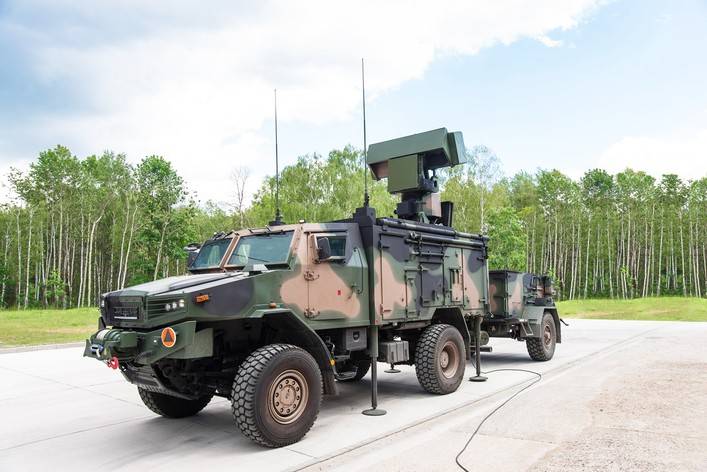
Bystra radar for Pilica + ZRPK. Photo PIT-RADWAR
Currently, the Polish armed forces are conducting a major program of radical re-equipment of anti-aircraft units. New samples of different classes are being developed and purchased, designed to replace obsolete equipment. In particular, the niche of short-range air defense systems will be occupied by the new Pilica + missile and gun system. Recently, the Polish Ministry of Defense issued new orders for the production and integration of its components.
In the process of purchasing
The air defense modernization program has been developed over the past few years, and several ready-made projects already exist. Yes, in 2020-22. Polish industry, represented by the PGZ-Pilica + consortium, built and handed over to the army four batteries of the PSR-A Pilica artillery complex. Delivery of two more is expected in the near future. In parallel with their assembly, the development of a more advanced Pilica + cannon-rocket complex was carried out.
To date, the main work on the Pilica + air defense missile system has been completed, thanks to which the process of purchasing and manufacturing equipment begins. So, in March, the Arms Agency of the Ministry of Defense of Poland issued an order to the PGZ-Pilica + consortium for 22 Bystra mobile radars. The total value of these products is PLN 1,1 billion (approx. USD 270 million). The new radars will be distributed among the Pilica+ batteries one at a time.
On April 28, the Arms Agency issued several more large orders. The PGZ-Pilica + consortium received a contract worth 3 billion zlotys (720 million dollars), according to which it will have to build 16 Pilica + complexes, as well as upgrade 6 already ordered ZAKs to full-fledged air defense systems. Deliveries of new equipment should start in 2025 and be completed in 2029.
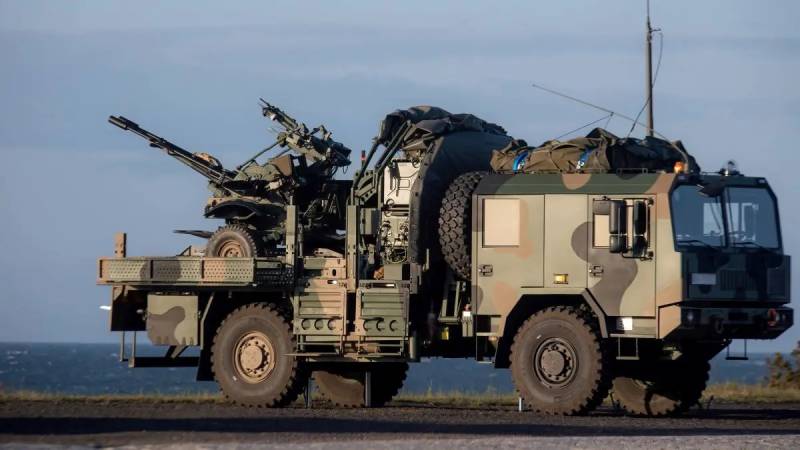
Artillery system from Pilica+. Photo by the Ministry of Defense of Poland
Another contract was awarded to the British branch of the European company MBDA. In 2025-29 it is to manufacture and hand over to the Polish industry for final assembly 44 iLauncher launchers. It will also have to deliver several hundred (the exact number is not named) CAMM anti-aircraft missiles. The value of all these products reached 1,9 billion pounds (about 10 billion złoty). The contractor notes that this is the largest order for CAMM products to date from a European NATO member.
Thus, according to current plans and signed contracts, in 2029, 22 batteries of new Pilica + anti-aircraft missile and gun systems will appear in the air defense units of the Polish army. 21 ZRPK will take up combat duty, and one complex, rebuilt from the ZAK of the first batch, will be used as a training one.
Technical features
The Pilica+ project was developed by Polish enterprises with some participation of foreign organizations. The lead executor and coordinator of the project was the Polish state organization Polska Grupa Zbrojeniowa (PGZ). Polish ZM Tarnów, PIT-Radwar, PCO, etc. were involved in the project as developers and suppliers of various components. The short-range missile is provided by MBDA.
Pilica + is a short-range anti-aircraft missile and gun system designed to cover important objects and areas. Provision is made for long-term combat duty in one position. At the same time, all funds are placed on automobile chassis, which allows you to quickly transfer and deploy the complex. Polish-made chassis are used, well mastered in operation.
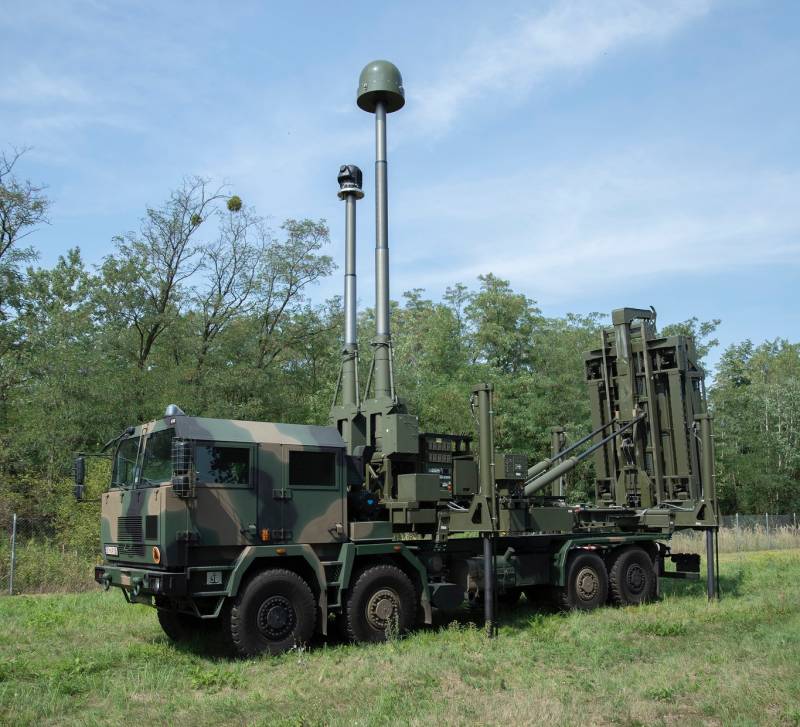
Launcher "Pilica +" on the chassis Jelcz P882.57 of the Polish army. Photo MBDA
The minimum Pilica+ battery pack includes one Bystra radar on a two-axle Żubr-P chassis. The station is equipped with an active phased array (for the first time in Polish air defense) and operates in the C-band. All-round visibility with an elevation angle of up to 70 ° is provided. The detection range of typical targets is up to 80 km. "Fast" will transmit data to the command post, whose task will be to identify targets, determine their danger and distribute between firepower.
The battery includes two iLauncher launchers on a four-axle Jelcz P882.57 chassis. One vehicle carries eight transport and launch containers with CAMM missiles. Duty and combat work are carried out in an automated mode under the control of the command post.
The MBDA CAMM (Common Anti-Air Modular Missile) anti-aircraft guided missile is a conventional munition with a length of 3,2 m and a diameter of 166 mm, excluding rudders. Weight - 99 kg. The product is equipped with an active radar homing head. The launch is carried out vertically with the possibility of a turn on a given course. Launch range - at least 25 km.
The artillery unit of a typical Pilica + air defense missile system includes three ZUR-23-2KG Jodek-G towed installations. This is a Polish copy of the old Soviet 23 mm ZU-23-2 system, supplemented with a launcher with two Piorun MANPADS. The unit is transported in the back of a two-axle truck Jelcz 442.32. Shooting and launches are possible both from the ground and from the car.
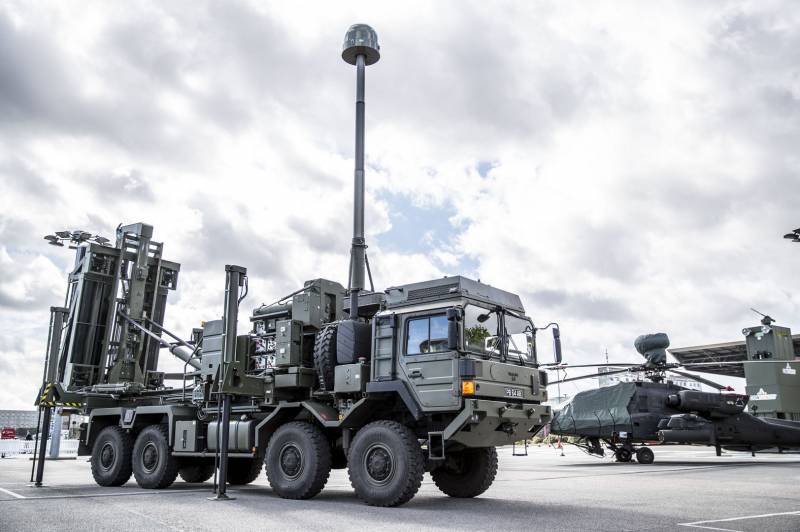
Launcher on MAN chassis. Photo MBDA
ZUR-23-2KG retains standard guns and related devices. At the same time, she receives fire control equipment. There is an optical-electronic station with the functions of a sight, as well as devices for receiving and issuing data on targets from the command post. New systems should improve the accuracy of shooting, but other characteristics are determined by the components used. So, the firing range of the cannons does not exceed 2-2,5 km, and the launch range of Perun missiles reaches 6,5 km.
Defense Component
According to known data, the air defense of the Polish Armed Forces, divided between the ground forces and the Air Force, is equipped mainly with old and obsolete Soviet-style systems. Thus, the only means of long-range defense are the S-200 air defense systems. Short-range systems are represented by S-125, "Cube" and "Osa" products. There are MANPADS of own production Grom and Piorun. A significant role is played by self-propelled and towed artillery systems in caliber 23 mm.
To the extent possible, the existing air defense systems, air defense systems, ZAK and ZSU were modernized, but such projects faced objective limitations. As a result, a full-fledged air defense re-equipment program was needed with the transition to modern models. Real work in this direction began only a few years ago. The development of several of its own projects has started, and a few months ago Poland received the first battery of the American Patriot air defense system.
The Pilica + project is being developed with the aim of closing the niche of short-range and short-range anti-aircraft systems. However, it is not the only one of its kind. So, in April 2022, the Polish army ordered the production of Narew medium-range missile systems. The first two SAMs of this type are considered "transitional" and equipped with CAMM missiles. The following air defense systems will receive CAMM-ER products with a range of 40 km.
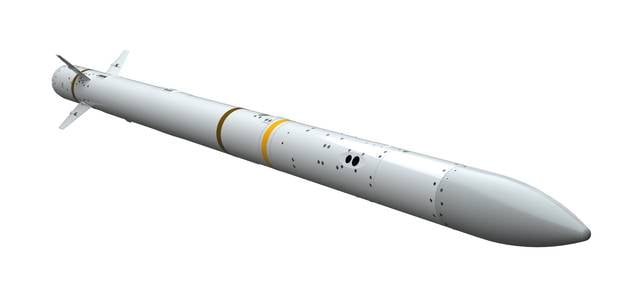
Rocket CAMM. MBDA Graphics
According to the latest news, until 2029, Poland plans to receive and put on combat duty 21 Pilica + air defense systems and send one more to the training unit. The production of Narew medium-range air defense systems has already begun. Recently, the first two complexes of the "initial" configuration with short-range missiles were handed over to the customer. In the future, deliveries of air defense systems in the final configuration are expected. By 2035, the army expects to receive 23 batteries with 46 complexes - one radar and three launchers each.
Big plans
Thus, the military and political leadership of Poland has not only planned a major upgrade of the air defense of the ground forces and the Air Force, but is also taking real measures. Various anti-aircraft systems are being developed or are already being purchased, which in the future will have to replace outdated Soviet-made equipment.
It is expected that several dozen new Narew air defense systems and Pilica + air defense systems, as well as other types of equipment, will be able to improve the defense of almost the entire country. Nevertheless, as recent orders show, such rearmament will be very expensive. It should be borne in mind that Poland has conceived several other large and expensive programs for the re-equipment of the army. Whether it will be possible to fulfill all these plans and modernize the army without prejudice to other areas, time will tell.
Information